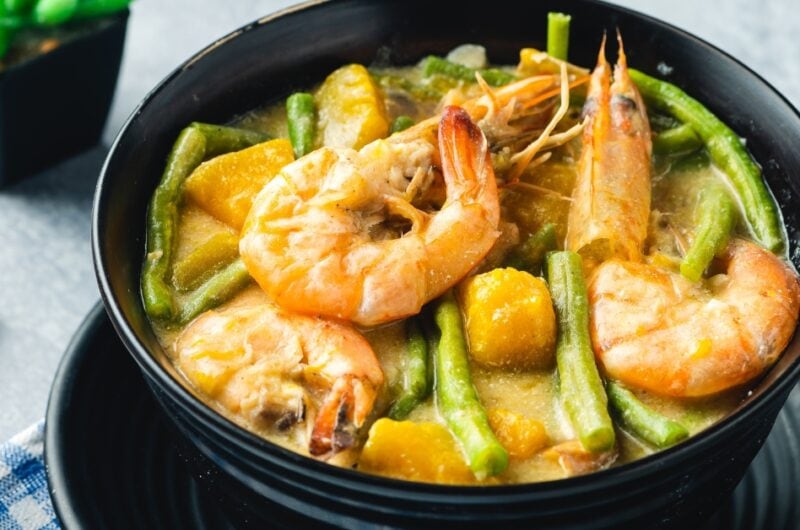From Appetizers to Desserts : The Ultimate Filipino Food Recipes.
Discover the Rich Preference of Filipino Food With These Must-Try Recipes
Filipino food provides an amazing tapestry of tastes that reflect the nation's rich cultural heritage. Each dish tells a tale, from the mouthwatering depth of Adobo to the refreshing flavor of Sinigang, welcoming cooking enthusiasts to check out a diverse range of tastes.
Adobo: The Iconic Meal
Adobo has actually arised as the ultimate dish of Filipino food, fascinating tastes both in your area and abroad. This beloved meal is defined by its special mix of savory, sour, and a little pleasant flavors, attained via a careful marination procedure. Generally, adobo is prepared utilizing chicken or pork, although variations exist that integrate seafood and vegetables.
The fundamental ingredients of adobo consist of soy sauce, vinegar, garlic, bay leaves, and black pepper, which together develop an abundant and aromatic sauce. The cooking approach commonly includes simmering the meat in the marinate, enabling it to soak up the complicated tastes while softening. This process not only improves the taste yet also functions as a natural chemical, making adobo an optimal dish for storage.
Adobo is often served with fit to be tied rice, which complements its durable taste account. Whether appreciated at home or in dining establishments, adobo stays a staple that personifies the significance of Filipino friendliness, making it a must-try for anyone discovering this vibrant food.
:max_bytes(150000):strip_icc()/265040-Filipino-Beef-Giniling-Pamela-Leyva-1x1-1-6f5eefd058da41bdb609059b253ea76d.jpg)
Sinigang: A Tangy Delight
An additional keystone of Filipino food is sinigang, a meal celebrated for its distinct zesty taste. This full-flavored soup is generally made with a range of meats, including pork, beef, shrimp, or fish, and is defined by its sour brew, which typically stems from tamarind, eco-friendly mango, or calamansi. The equilibrium of level of acidity and umami produces a revitalizing contrast that is both soothing and invigorating.
Sinigang is typically enriched with an array of fresh vegetables such as radish, eggplant, water spinach, and string beans, contributing not just to the recipe's flavor account however likewise to its dietary worth - Filipino food recipes. Each family members may have its own version, with regional variants that mirror local ingredients and cultural impacts
The preparation of sinigang includes simmering the picked meat until tender, followed by the enhancement of the souring representative and veggies. This approach allows the tastes to meld wonderfully, resulting in a passionate and satisfying dish. Commonly offered with fit to be tied rice, sinigang personifies the significance of Filipino friendliness and is a cherished staple, frequently taken pleasure in throughout family members celebrations and special events.
Lechon: The Joyful Roast
Lechon, often considered the centerpiece of festive Filipino celebrations, is a succulent baked pig understood for its crispy skin and tender, flavorful meat. This renowned my blog dish is deeply rooted in Filipino culture, usually enhancing tables during birthday celebrations, wedding events, and substantial vacations. The preparation of lechon is an art kind, requiring thorough attention to detail, from marinading the pig with a blend of spices to guaranteeing an even roast over an open flame or in a specialized stove.
Usually, the pig is experienced with a mixture of salt, pepper, and neighborhood herbs, giving a rich taste that complements its natural juiciness. The cooking process can take a number of hours, during which the skin transforms into a flawlessly crispy layer, developing a delightful comparison to the delicious meat below.
Lechon is typically offered with a side of liver sauce or vinegar dip, boosting its mouthwatering account. It is not just a meal but a common experience, as households and buddies collect around to enjoy this sumptuous meal. The scent of lechon wafting through the air is an invitation to delight, making it a precious icon of celebration in Filipino culture.
Kare-Kare: Oxtail Stew
Kare-Kare, an abundant and passionate oxtail stew, holds a special location in Filipino culinary tradition, celebrated for its unique taste profile and lively discussion (Filipino food recipes). This recipe is characterized by its luscious peanut sauce, which is created by grinding baked peanuts or utilizing peanut butter, offering it a luscious and nutty significance. Traditionally, kare-kare attributes tender oxtail, although variants might include tripe or beef shank, each contributing to the stew's deepness of flavor
The prep work of kare-kare typically involves slow-cooking the meat up until it comes to be incredibly tender. The addition of a variety of veggies, such as eggplant, string beans, and banana hearts, not only boosts the stew's dietary worth however go right here also its aesthetic allure. Served with a side of bagoong, or fermented shrimp paste, kare-kare perfectly balances its rich, full-flavored notes with a salted kick.
Usually enjoyed during unique celebrations and family members celebrations, kare-kare personifies the essence of common dining in Filipino culture. Its fascinating complexity and reassuring warmth make it a recipe that is not just satisfying to the taste buds however additionally stimulates a feeling of nostalgia for several Filipinos worldwide.

Halo-Halo: A Dessert Treat
Halo-halo is often considered the ultimate Filipino dessert, celebrated for its vibrant mix of textures and flavors - Filipino food recipes. This delightful mixture is an excellent representation of the Philippines' rich cooking heritage, combining different components that integrate to produce a refreshing and indulgent treat, specifically during hot climate
At its core, halo-halo functions crushed ice topped with a variety of active ingredients, including sweetened beans, jellies, fruits like bananas and jackfruit, and luscious leche flan. A charitable inside story of ube (purple yam) gelato crowns the combination, adding a rich, luscious taste her response that elevates the dessert. The layering of components not only produces a feast for the eyes however additionally provides a complicated interplay of sweet taste and appearance in every spoonful.
Traditionally served in a glass, halo-halo encourages restaurants to blend the materials before enjoying. This communal aspect enhances the dessert's charm, as everyone's version can be distinctly tailored. Whether enjoyed as a road food extravagance or an unique celebration treat, halo-halo stays a precious sign of Filipino society, welcoming everyone to discover its delightful and varied tastes.
Conclusion
